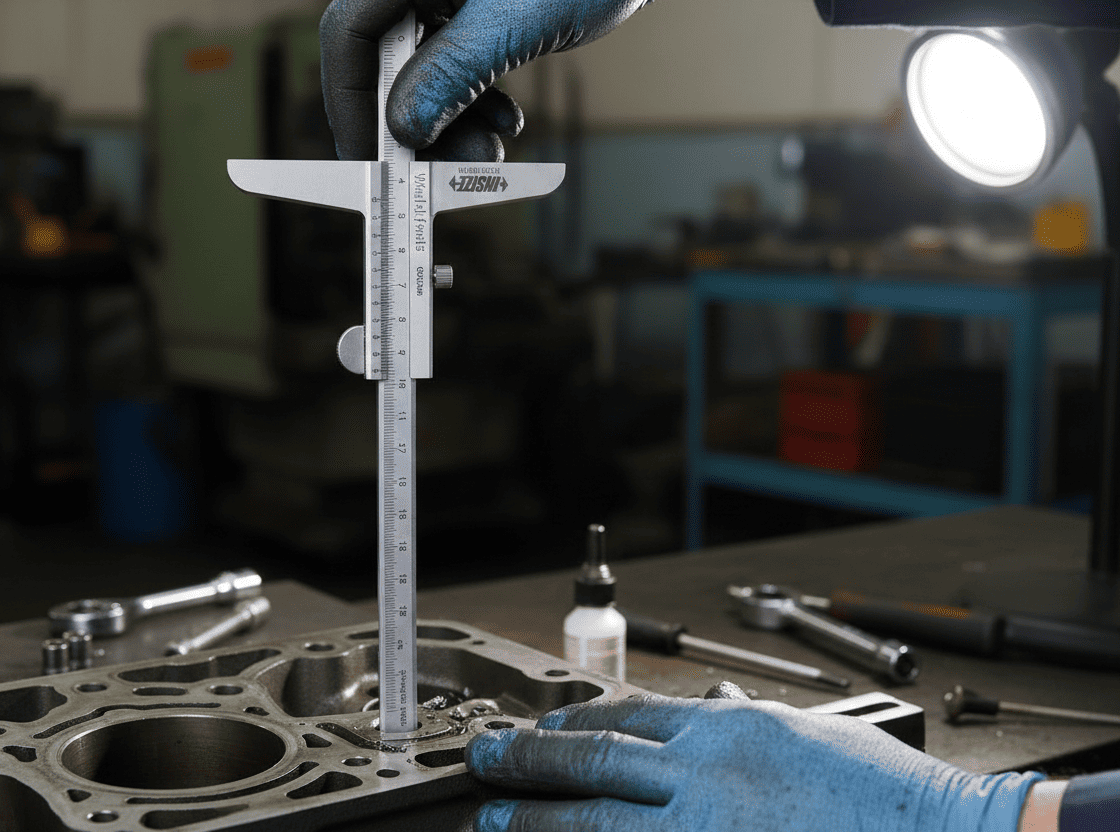Mechanical Depth gauge
+3 Common Mistakes That Cause Inaccurate Depth Measurements with Your Depth Gauge
The depth gauge is a familiar tool in mechanical processing, woodworking, and auto repair. However, even experienced workers can still encounter errors due to a few small neglected steps. Below are the three most common mistakes and how you can avoid them to ensure accurate measurements every time.

1. Neglecting to Clean the Surface and the Base of the Depth Gauge
This is the most frequent error and a primary cause of significant measurement deviation. Just a thin layer of dust, a few metal shavings, or a small grease stain is enough to prevent the gauge base from making full contact with the reference surface. In such cases, the depth gauge almost always yields a result higher than the actual value.
To avoid this, take a few seconds to clean the gauge base and the surface to be measured with a soft cloth or compressed air before each operation. This small habit helps noticeably reduce measurement errors.
2. Applying Uneven Pressure When Using the Depth Gauge
Another common mistake is applying too much or too little force when pressing the gauge onto the measuring surface. Too much force can easily bend the measuring rod or wear down the measuring tip. Too little force causes the gauge to be unstable and prone to angled misalignment.
The applied pressure is a key factor determining accuracy when using a depth gauge. Therefore, place the gauge with moderate force so that the measuring rod gently and completely touches the bottom of the groove at a perfect right angle.
3. Misreading the Graduations or Forgetting the Zero Set
With mechanical gauges, errors often stem from reading at an angle, leading to parallax error or confusion between graduations. When it comes to digital gauges, the most common cause is forgetting to set the zero point on the reference plane before starting the measurement.
The solution is very simple: always read the mechanical gauge at a vertical angle to the graduations, and with a digital gauge, remember to perform a zero set before every measurement to ensure the most accurate result.
When the Gauge Still Measures Inaccurately Even After Correcting Errors
If you have corrected all the above errors but the measurement results remain inconsistent, the problem likely lies with the device itself. A good quality depth gauge, especially a digital one from reputable brands like Mitutoyo, Insize, etc., will help minimize errors arising from the tool.
-
-
-
-
-
-
-
-
-
-
-
-
-
-
-
-
-
-
-
-
-
-
-
-
